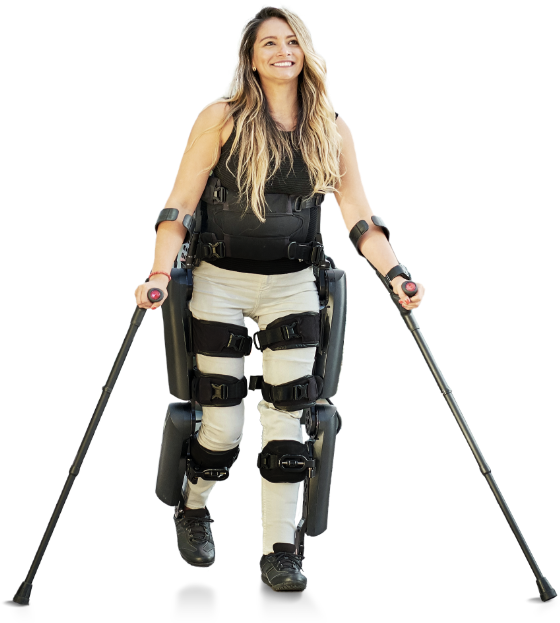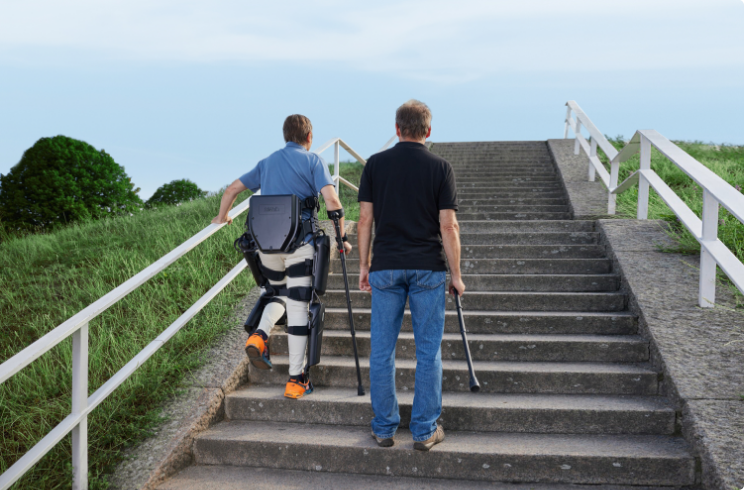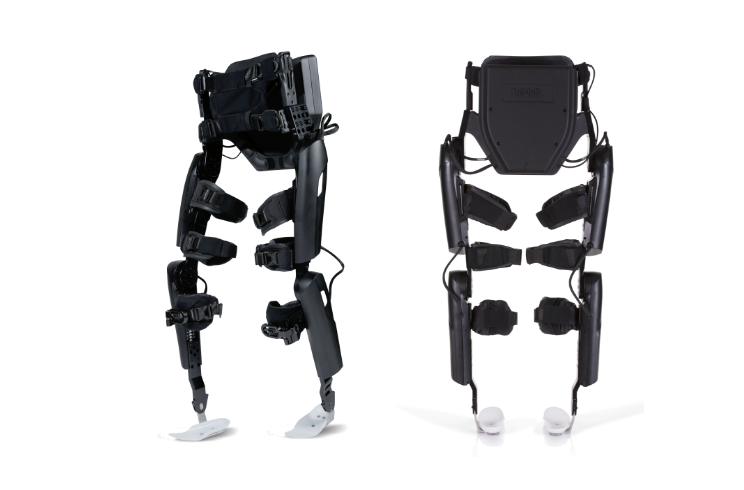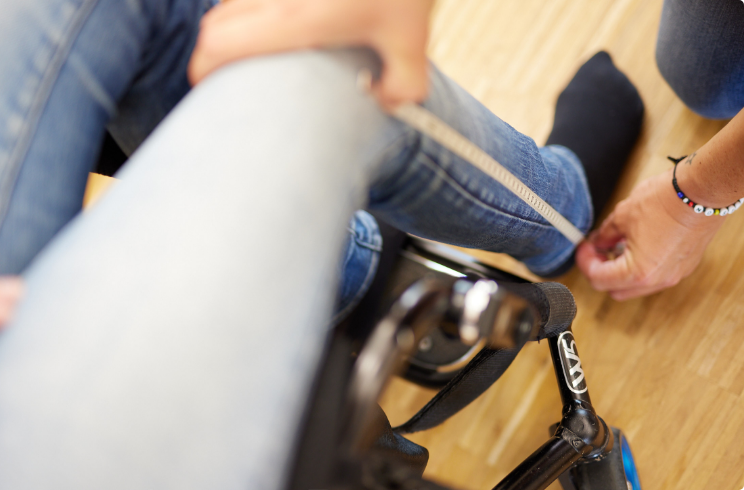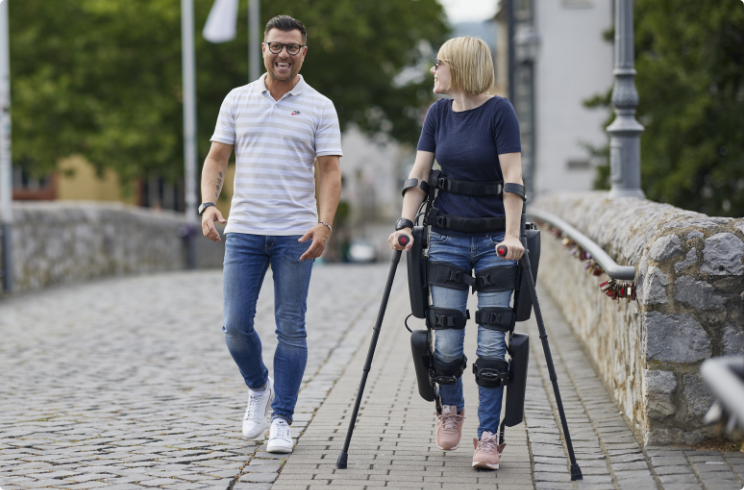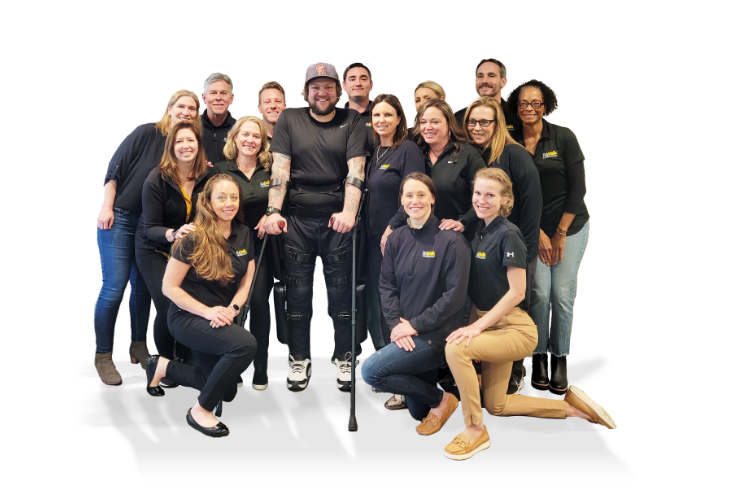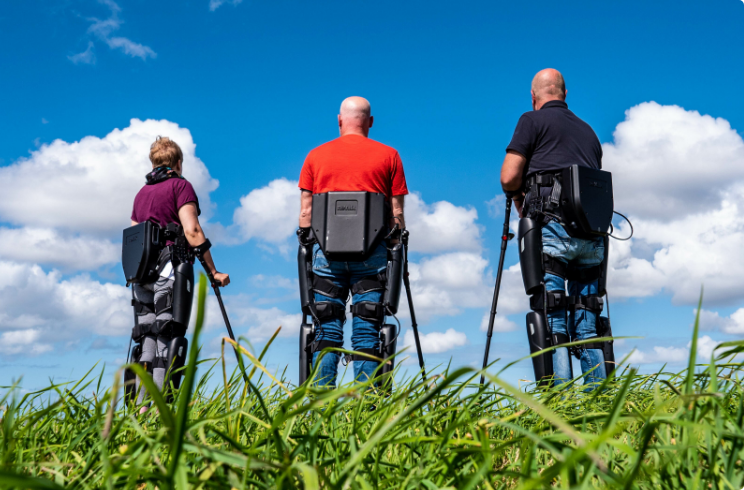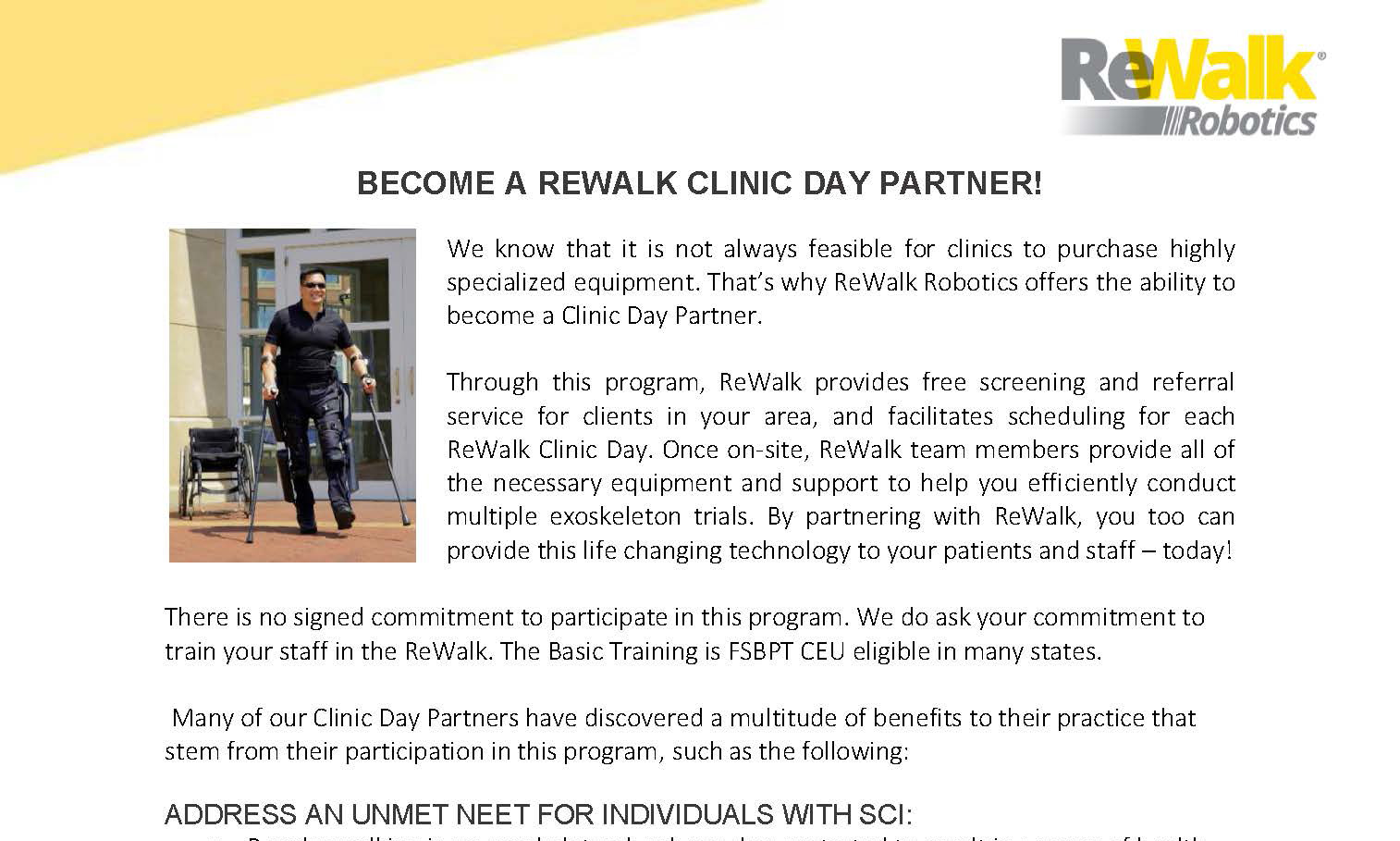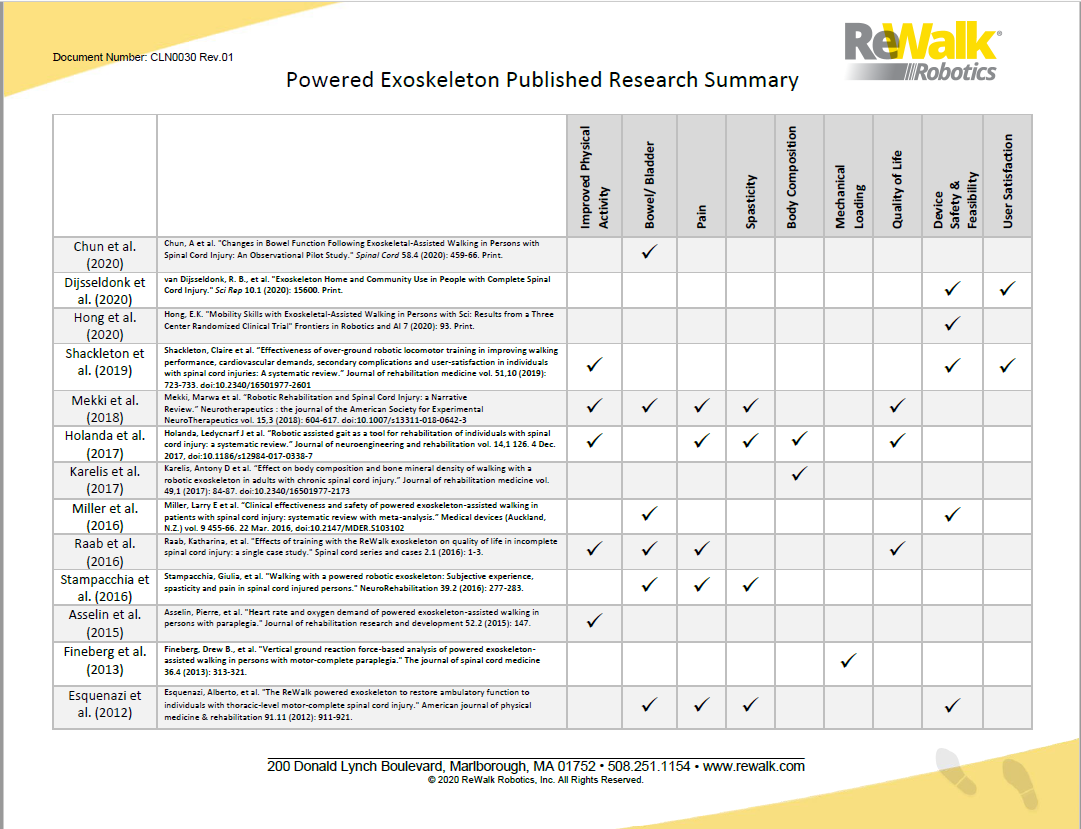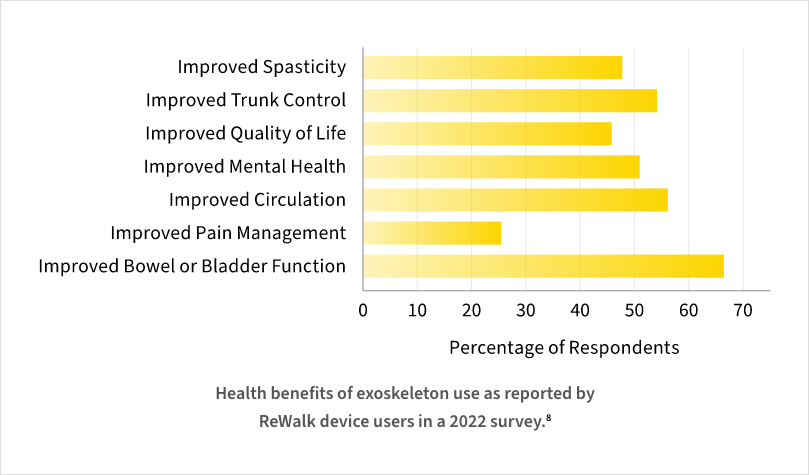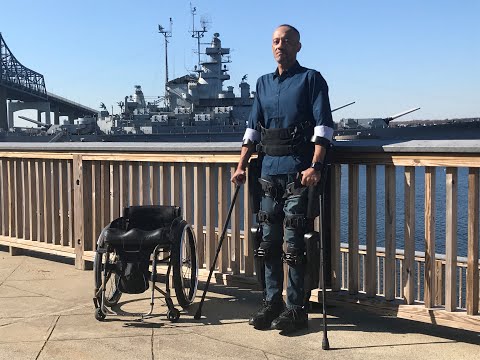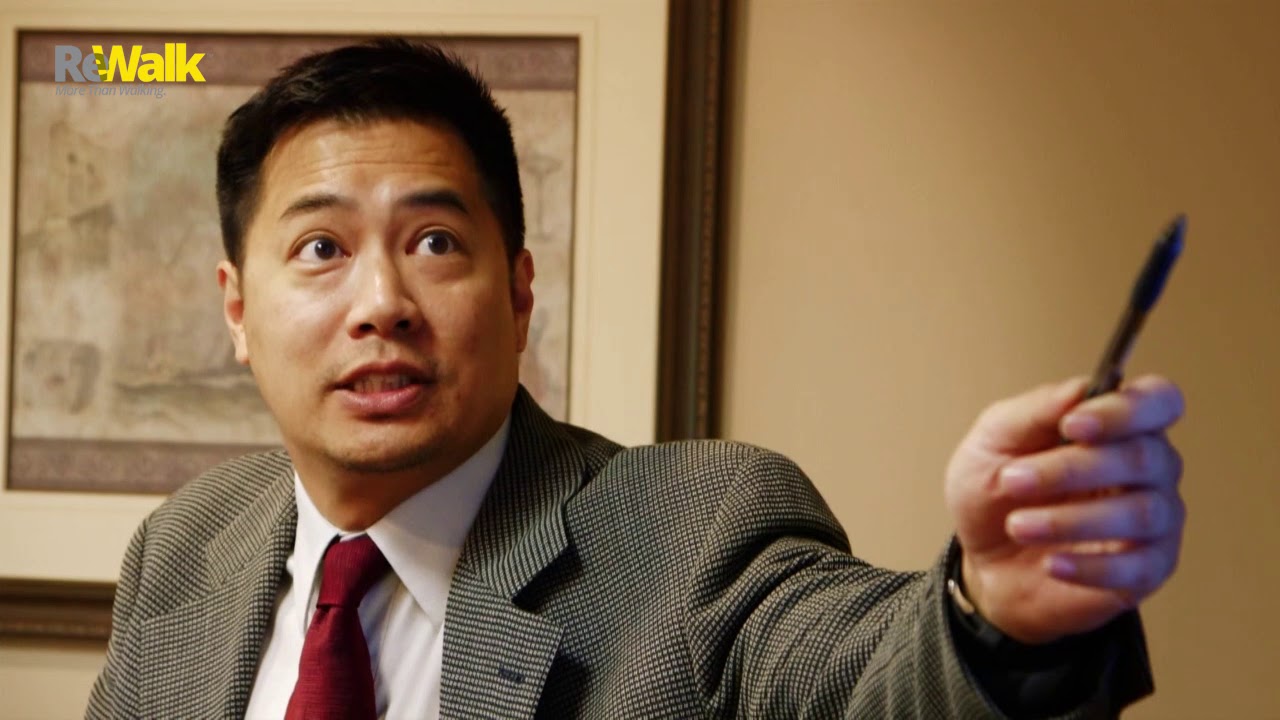ReWalk Personal Exoskeleton Indications for Use (USA)
The ReWalk® Personal Exoskeleton fits to the lower limbs and part of the upper body and is intended to enable individuals with spinal cord injury at levels T7 to L5 to perform ambulatory functions in home and community settings with supervision of a specially certified companion in accordance with the User assessment and training certification program. The device is also intended to enable individuals with spinal cord injury at levels T4 to T6 to perform ambulatory functions in rehabilitation institutions in accordance with the User assessment and training certification program. The ReWalk Personal Exoskeleton is intended for indoor and outdoor use: including standing and walking on level surfaces and mild slopes, and ascending and descending stairs and curbs.
ReWalk Personal Exoskeleton Indications for Use (EU)
The ReWalk® Personal Exoskeleton is intended for orthotic fitting of the lower limbs and part of the upper body to enable people with lower limb disabilities to perform routine ambulatory functions in an urban terrain (stand, walk on level surfaces and mild slopes, ascend and descend stairs). The ReWalk is not intended for sports or aggressive use.
